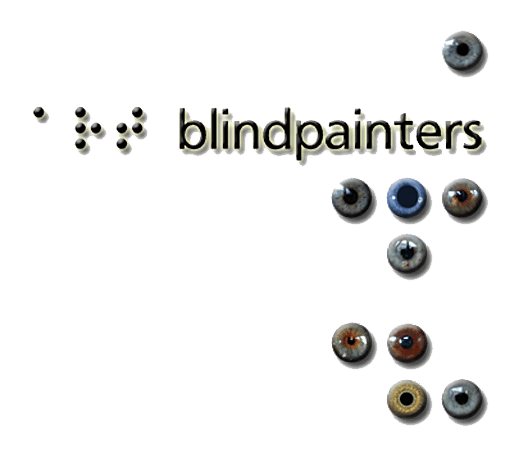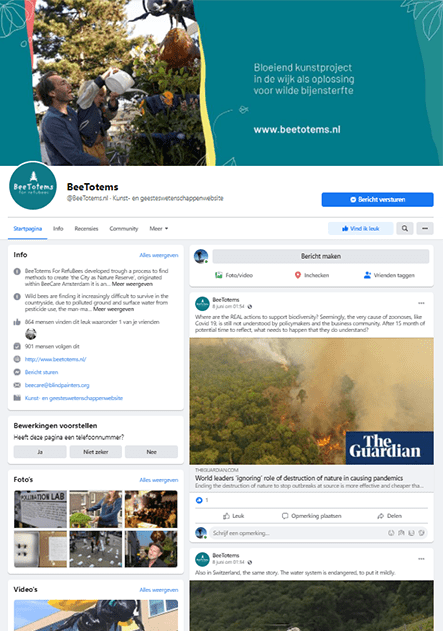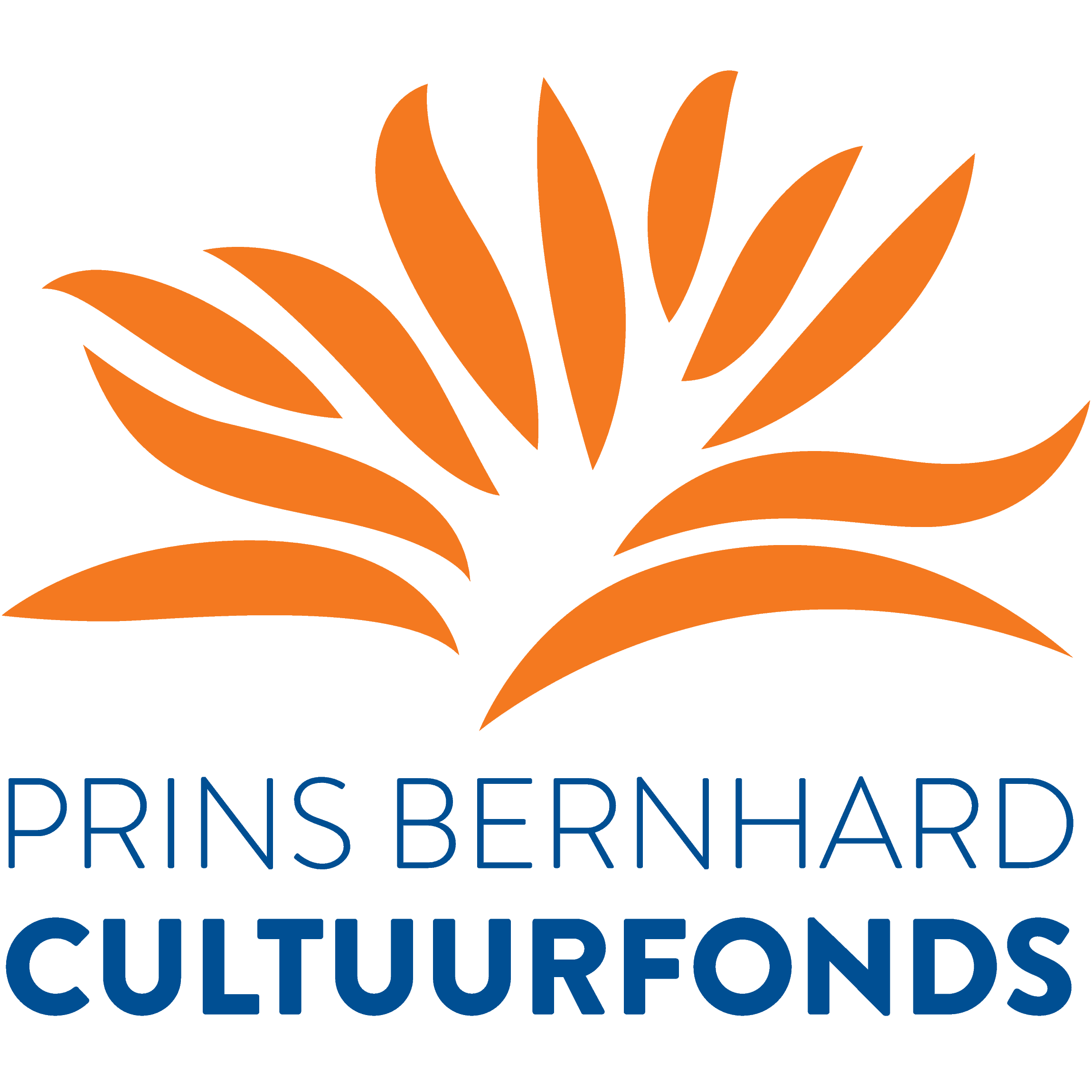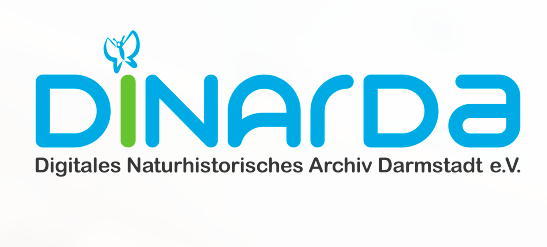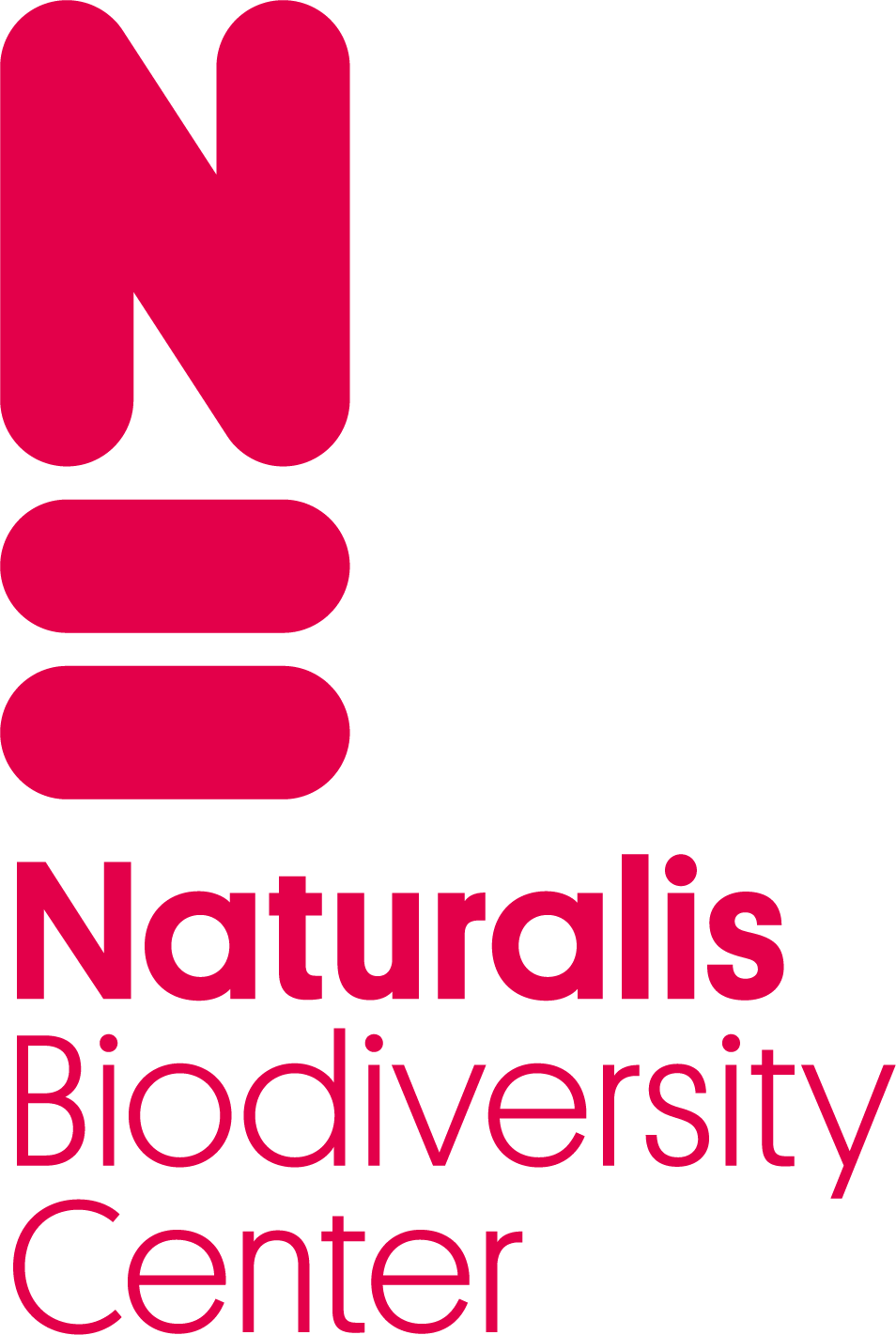RefuBees and the City
ART PROJECT SETS NEW MILESTONE IN SOLUTION TO GLOBAL BEE MORTALITY

The City as temporary Nature Reserve for Wild Bees
Bees do much better in inner cities than in the countryside – streets, squares and neighbourhoods are dedicated to diverse species of wild bees

Art/Science and out of the box
An interdisciplinary approach that combines sociological, ecological and educational elements through performative acts, sculptures and scientific research

BeeTotems as methodology
Effective application to create bottom-up movements – each BeeTotem is dedicated to a different sort of wild bee. By creating BeeClans in neighbourhoods, everyone in the street can join in and welcome the RefuBee!


Art/Science
‘BeeTotems for RefuBees’ is an interdisciplinary art project that combines sociological, ecological and educational elements through theatrical acts and living sculptures to initiate a spiritual and cultural transformation. An art/science project with scientific research components that are used as a case study. With profound conceptual and experimental elements in the context of urban ecology & eco-cities, it adds an additional social value. Totemism and its associated rituals are utilised as a method of engagement to install and advance social cohesion. For example, in nature-inclusive building in contemporary architecture projects. BeeTotems for RefuBees is avant-garde, bottom-up, circular, up-cycling and all-inclusive.
The Inner City as a Nature Reserve
It is hard to believe, but it is scientifically proven that bees do much better in inner cities than in the countryside. This is mainly due to polluted ground and surface water from pesticides, monoculture and destruction of nesting sites. The bee has become a refugee in need of shelter and food. This dilemma will be solved theoretically and practically in 2014, during the BeeCare symposium ‘The Inner City as a Nature Reserve’, with an interdisciplinary group including an ecologist, a sociologist and a policy maker. In order to prevent the extinction of the numerous species of wild bees, we need to understand them together as refugees who need food and a roof over their heads: the RefuBee.
Honey bees and wild bees
For example, in the Netherlands there are 360 different species of bees. One of these is the honey bee. All the others are wild bees and these are by far the most important for the biodiversity. They do not provide honey, but they do provide quality pollination. Most wild bees are ‘plant fixed’, which means that they pollinate one specific plant species (monolectic and oligolectic). The most specialised flower-visitor is therefore the best pollinator. For example, it is the wild bee that pollinates our tomatoes – not the honey bee. Wild bees are the foundation of our ecosystem: their extinction will cause a domino effect with an unprecedented loss of biodiversity that will accelerate the current 6th mass extinction. More than half of the wild bees are currently on the Red List of threatened species.
Disastrous consequences
Scientists have been ringing alarm bells about the symptoms of biodiversity loss and ecosystem collapse for years. Unfortunately, they have no remedy for the culprits, such as selfishness, greed and a lack of empathy. Also, all the petitions we have signed in the last 10 years did not lead to any change. Since 1990, 80% of all flying insects have disappeared and if we cannot stop this trend, it probably will increase to 99% by 2030. In some provinces in China, people already have to climb apple trees to pollinate them manually with brushes. Insects are very important because they are at the beginning of the food chain’, says Midas Dekkers, Dutch biologist and writer.
 THE CITY AS A NATURE RESERVE FOR POLLINATORS
THE CITY AS A NATURE RESERVE FOR POLLINATORS
DE STAD ALS NATUURRESERVAAT
VOOR BESTUIVERS
If you want to change how someone thinks, give it up; you cannot change how another thinks. Give them a tool, the use of which will lead them to think differently.
Buckminster Fuller
The BeeTotem is such a tool. The people working with it experience that dedication to nature is a necessity and gain insight into interdependence. Ultimately, together they create ‘The City as Nature Reserve for Pollinators’. BeeTotems encourage the planting of specific crops already growing in the totem on balconies or in backyards.

Photos in this series: Ernst van Deursen

RITUAL FOR CREATING BEE CLANS

BEE CIRCUS AT THE INAUGURATION
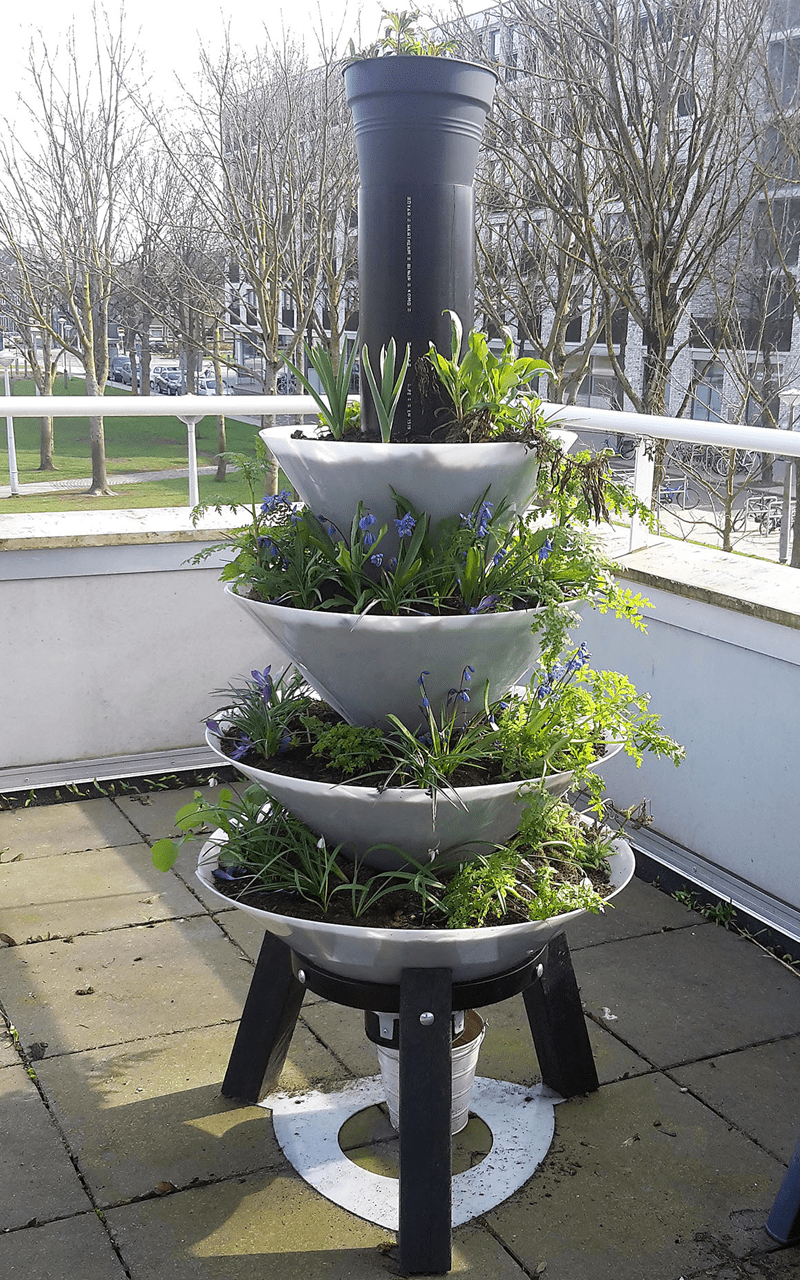
THE VEGETABLE ROCKET FOR AN EDUCATIONAL SCHOOL PROJECT

A BEETOTEM FOR THE PUBLIC SPACE
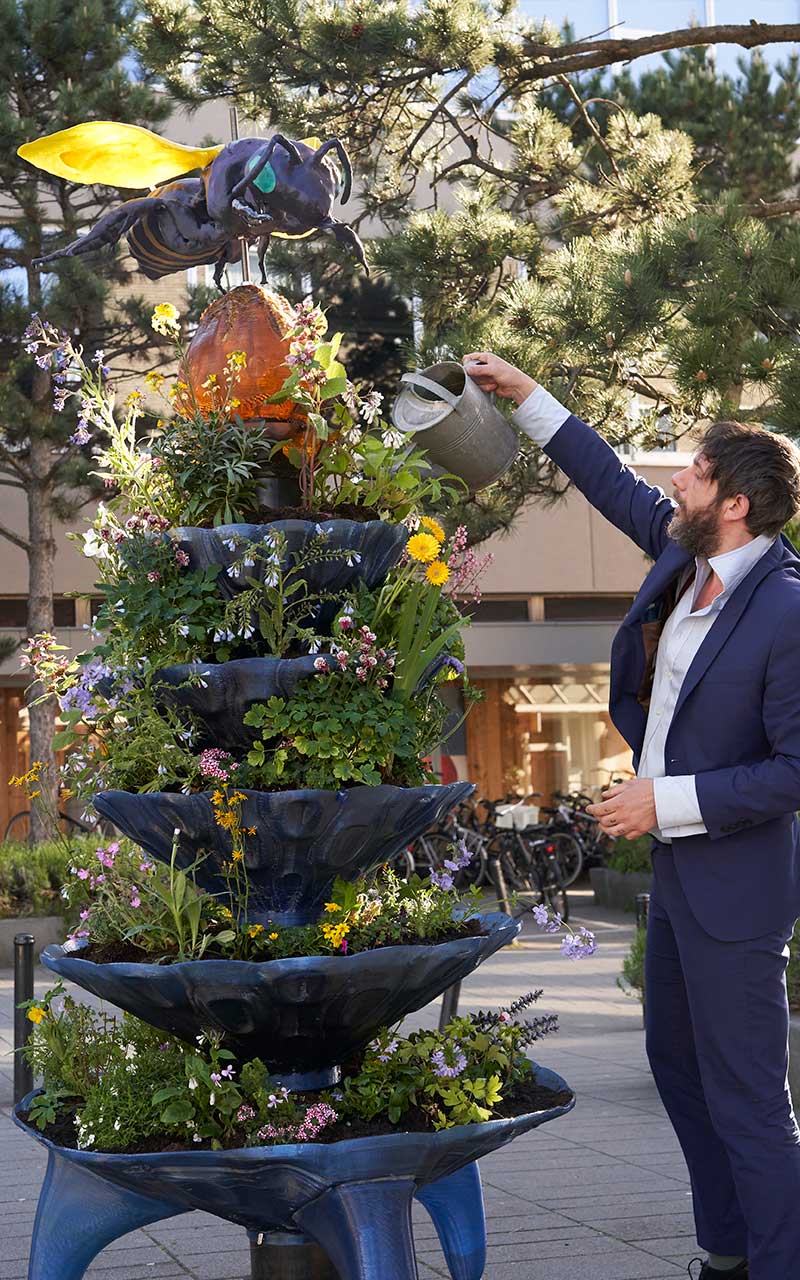
FOR PHILANTHROPISTS AND ART COLLECTORS

EDUCATIONAL PROGRAMME

WORKSHOPS, LECTURES AND SYMPOSIA

DOWNLOAD INFORMATION
DOWNLOAD
BEETOTEMS FACEBOOK
WHAT PEOPLE SAY
We create a buzz
A healthy social cohesion is a precondition for ecological sustainability.
With this application of totemism, we can rediscover our spiritual side, the side that connects us with the natural environment and all the creatures and plants that live in it.
The top environmental problems are selfishness, greed and apathy. And to deal with those we need a spiritual and cultural transformation. – and we scientists don’t know how to do that.
If you want to change how someone thinks, give it up; you cannot change how another thinks. Give them a tool, the use of which will lead them to think differently.
Sign the covenant
And choose on your dream location.
Please download the pdf and send it signed to: beecare@blindpainters.org
DOWNLOAD THE PDF


Hans Kalliwoda
BeeTotems for RefuBees is a project by intervention artist Hans Kalliwoda. BeeTotems are contemporary applications of totemism. During the last 20 years his work has been about sustainability issues and since 2011 his work focuses on the problems of biodiversity and pollinators. To know more about Hans, click here.
HOW IT WORKS
The BeeTotem
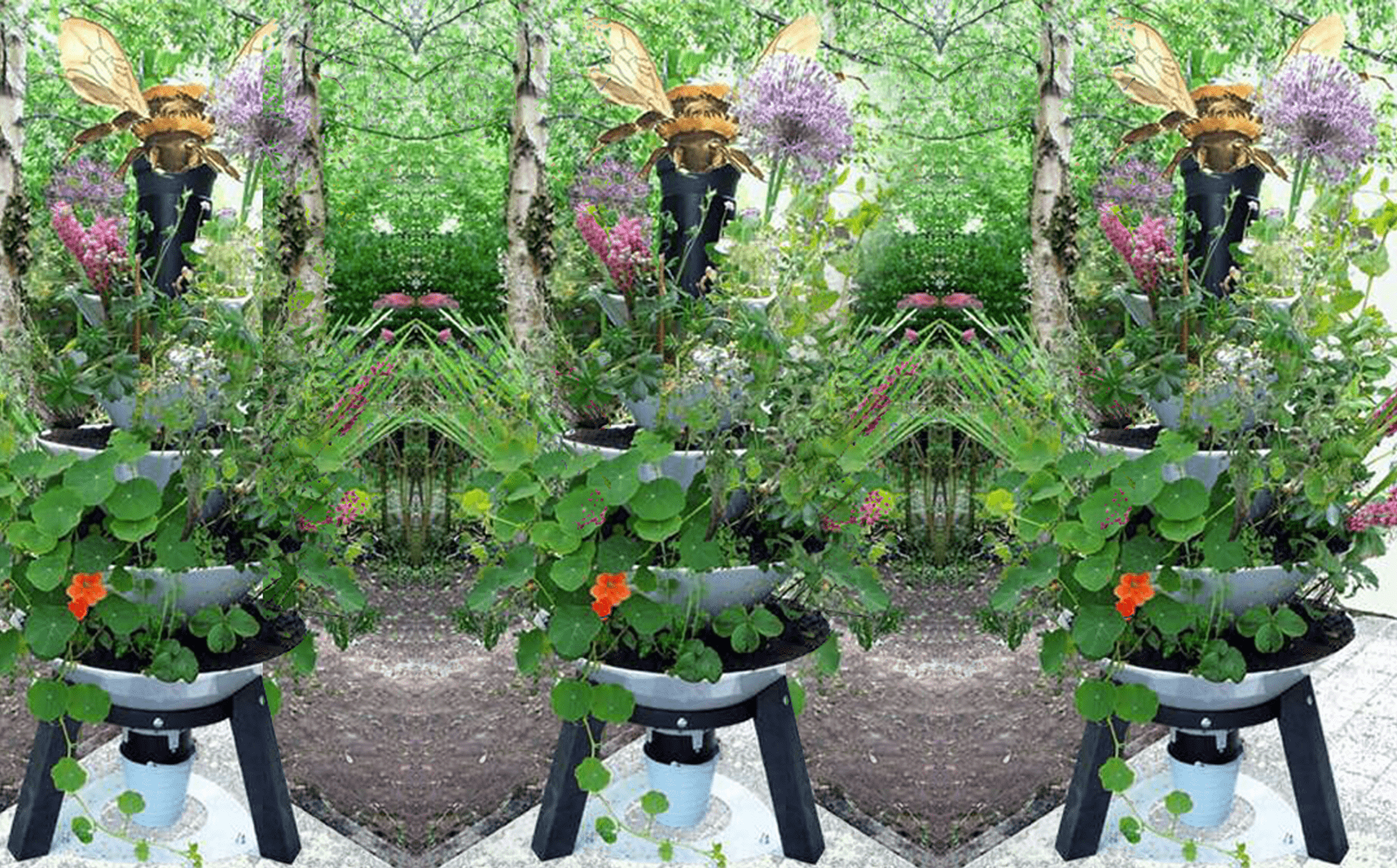
Circularity is so 20-20
BeeTotems are ‘bear-sized’ flowering street objects with a diameter of 120 centimetres. They are top restaurants for specific species of wild bees. In the middle of the totem is a tube in which tiger worms (Eisenia fetida) live. The worms eat vegetable leftovers and other organic kitchen waste. They are supplied by a group of local residents who have signed a covenant pledging to look after the BeeTotem. The worms leave the tube through holes and pee out ‘worm tea’. This is a high-quality natural fertiliser that is absorbed by the plants growing in the soil. As a result, the plant produces quality pollen and nectar and radiates this to the respective wild bee. Each totem is dedicated to a different wild bee with its own plant preferences. Quality food, through high quality nectar and pollen, ensures greater growth and resistance of the new generation of bees. The totem is circular and alive.

Cooperation with 3D printing and designers: Up-cycling as a must
The BeeTotem became a collective piece of work through the efforts of the partners who helped develop new 3D printing techniques. David van der Veldt of Veldtwerk provided essential technical advice and 3D print design, Vincent Koning of 3D Orbit and the team of gentlemen of HB|3D bv printed the designs. The confidence and insight of these innovative entrepreneurs has given the project a new impulse. It was quite a challenge to 3D print the BeeTotem with a five-axis converted robot arm (from the car industry) and an ingenious script. Material: recycled plastic bottles. An absolute premiere in its complexity for the Netherlands, maybe even worldwide!
The hyper-realistic bee sculptures (enlarged 12500 times) on top of the BeeTotems are printed by 3D Orbit. Naturalis Naturalis (Dutch Nature Museum) supplied all specimens of the 104 wild bee species present in Amsterdam. Sebastian Schmelzle and Michael Heethoff of the ecology department of TU Darmstadt cooperated by scanning and processing the wild bees with the most accurate 3D microscan equipment in Europe. The digital file became the basis for the three-dimensional prints of the bee species that the totem helps saving from extinction. As 3D printing techniques are still in their infancy, all partners in the BeeTotem project are taking a risk, both financially and technically. We are very happy to be working with Cruydthoeck De Heliant, the largest organic native plant nursery in the Netherlands, and to have found a partner in them. Also with Ninabel, who provides the BeeTotem with additional organic, and bee-luring plants and with her knowledge for the right proportions and planting. Spring Music an independent music label run by composer and cellist Ernst Reijseger, orchestrates heaven on earth and makes every opening an unforgettable experience. We are very proud that we have succeeded together and hope very much that the BeeTotem will find its way to a large audience. We believe in a holistic approach with circularity and up-cycling as a must.
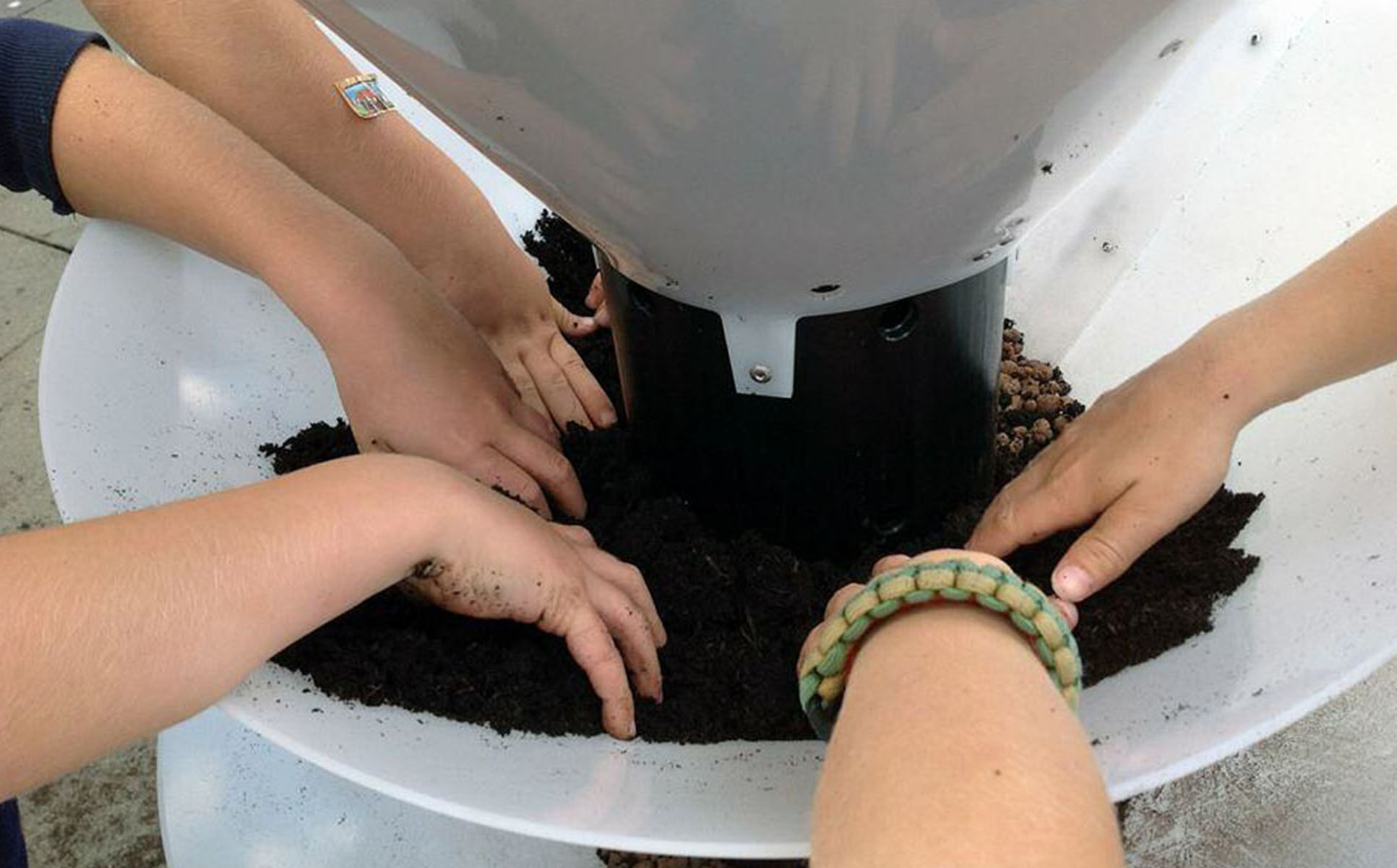
The new green is colourful
People can contribute directly to concrete transformation through simple actions, such as giving their kitchen scraps to the totem. The BeeTotem reflects its inhabitants in the street and is an expression of the responsibility they take together for the protection of the natural environment. After all, man is part of nature, but we sometimes forget that. Everyone in the street can participate: age, origin, education level, religion, LHBT … it is of no importance. As a bottom-up project, it will increase the colourful character of the neighbourhood.
Where are the BeeTotems?

Contact
Want to know more about the BeeTotems?

